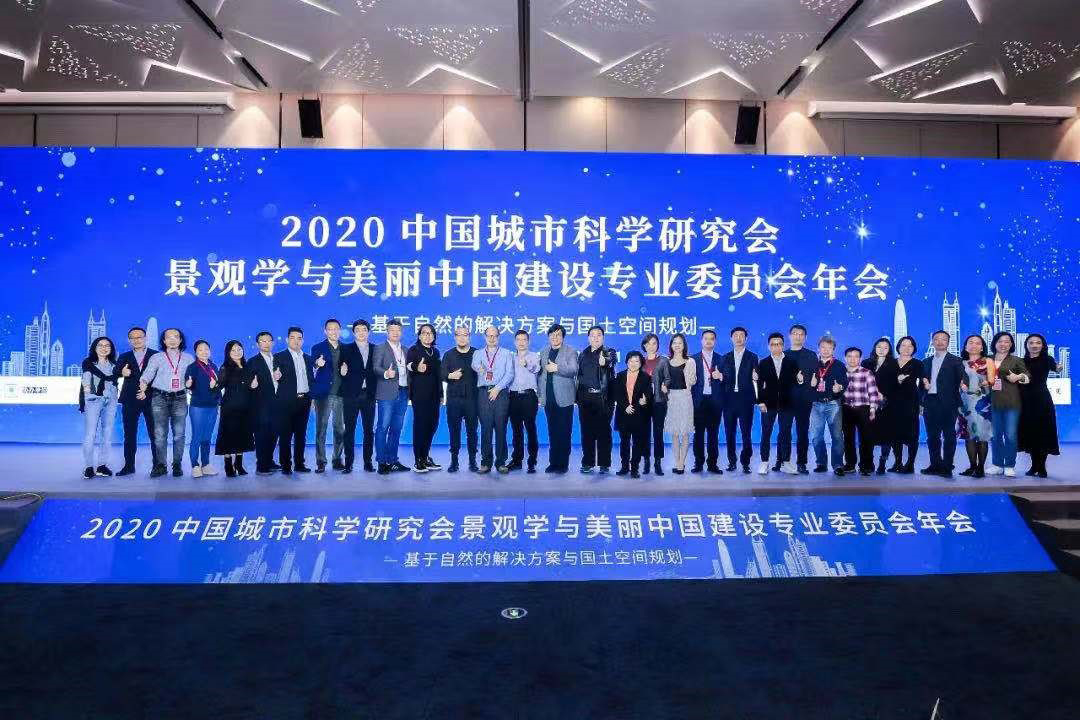

Photo of Speakers
As one of the organizers of 2020 CLA Annual Conference, ZEHO was invited to give a talk around the topic of “Nature-based Solutions and Territorial Spatial Planning” on December 12 and 13. Xing Lei, Design Director of ZEHO, made a report on Practice of Nature-based Solutions (NbS) in Ecological Restoration Project of Erhai Lake Riparian Buffer Zone, and communicated with well-known scholars and experts about the practice of nature-based solutions in the whole industry chain of research, design, construction and operation of ecological restoration in China.

ZEHO Spoke at the Conference
Li Dihua, Acting Dean of Peking University Collage of Architecture and Landscape, presided over and opened the conference. Experts including Yu Kongjian, Academician of AAAS, Professor of Peking University Collage of Architecture and Landscape, Li Jianqiang, Chief Economist of CREEI, Wang Hao, Academician of CAE made professional reports.
ZEHO, L&A Design, S.P.I Landscape Group, Yangtze Ecology and Environment Co., Ltd., GVL, HOPE, China Design Group, AUBE, UPDIS, UP+S and other well-known companies conducted extensive and in-depth discussions on their own professional subdivisions.
01 NbS Focuse on Ecosystem Restoration
The term Nature-based Solutions (NbS) had emerged in the 1990s in discussions of the role of biodiversity in reducing climate-related risks. In 2009, IUCN introduced NbS into the UNFCCC on climate change and later formally defined it as “actions to protect, sustainably manage, and restore natural or modified ecosystems, that address societal challenges effectively and adaptively, simultaneously providing human well-being and biodiversity benefits." On July 23, 2020, IUCN officially released the global standard of Nature-based Solutions. The 8 proposed NbS principles include: NbS Embrace nature conservation norms (and principles); NbS are determined by site-specific natural and cultural contexts that include traditional, local and scientific knowledge; NbS produce societal benefits in a fair and equitable way, in a manner that promotes transparency and broad participation; NbS maintain biological and cultural diversity and the ability of ecosystems to evolve over time; NbS recognise and address the trade-offs between the production of a few immediate economic benefits for development, and future options for the production of the full range of ecosystems services, etc.

NbS Focuse on Ecosystem Restoration
02 Practice of NbS in Erhai Lake Project

Collaborative Integration of Environmental Subsystems
Erhai Lake Riparian Buffer Zone has been the core area of Dali tourism and population growth because of its characteristics since long time ago. Taking Erbin Village 1km demonstration section as an example, farmland and population had been extended to the boundary of Erhai Lake before the project.
Based on the NbS concept, the design team considered the ecosystem services such as maintaining the biodiversity and reducing the non-point source pollution of the site. The design team from ZEHO invited domestic and international stakeholders including professional experts, government, and local residents to evaluate and diagnose the site from the following 4 aspects and 18 indicators: ecological spatial pattern, ecosystem quality, ecological vulnerability and social participation. Non-point source pollution, habitat fragmentation and low public participation were the key problems.
(1) Water Cleansing. Form Follows Function
In order to mitigate the non-point source pollution, the treatment water volume of the site was calculated, and the purification target was set up. The ditch water was introduced into the concave meadow wetland and the current intense forest, supplemented by the combined purification process of ecological gravel bed and natural surface flow wetland to remove SS, TN, TP and COD from the upstream water to achieve water purification, biotope supplement, biodiversity and other ecosystem services.




Water Cleansing. Form Follows Function
(2) Habitat Prioritization. Form Follows Nature.
Ecological relocation of shantytowns and homesteads and introducing local communities solved the habitat fragmentation problem. The restoration plan was proposed based on biological habitat protection, including ecological dense forest, sparse wood grassland, meadow wetland, and forest wetland. The plan provided nesting and foraging habitat for local birds such as Egret, Pond Heron, Little Grebe and Hoopoe. Minimal human intervention promoted natural ecosystems restoration.




Habitat Prioritization. Form Follows Nature
(3) Preservation and Conservation. Respect of Nature.
In the estuary area of Tingming River and the lakeside area adjacent to Erhai Lake water boundary, the local ecosystems such as Salix Cavaleriei and Dawn Redwood were preserved through low-interference manual construction, partial dredging of waterways and removal of invasive species. Meantime, the use of near natural ecological materials transformed the original farmland road into walking trials, which bringing people close to nature.



Preservation and Conservation. Respect of Nature.
One year after the construction, the lakefront was richer in plant communities, and the amount of bird species that inhabit was growing. The increased habitats and biodiversity at the water land ecotone compensated for losing the lakeshore caused by human encroachment. At Erhai Lake, NbS took an important step from concept to real practice. The human-lake symbiosis model of Restoring Human Residence to Lake was achieved, and the closed - loop of "analysis - echnology - simulation - design - construction - operations - assessment - feedback" was developed, which further provided technical support for the subsequent ecological restoration projects of 129km Erhai Lake Riparian Buffer Zone.




ZEHO ECO: Harmonizing Tradition and Innovation in Ancient Architecture Exhibition Parks
ZEHO ECO was invited to speak at the 2023 Carbon Neutrality, Zero Carbon China Summit
ZEHO was Invited to Exhibit in the 2020 UPSC Urban Renewal Academic Committee Annual Conference
2020-12-10